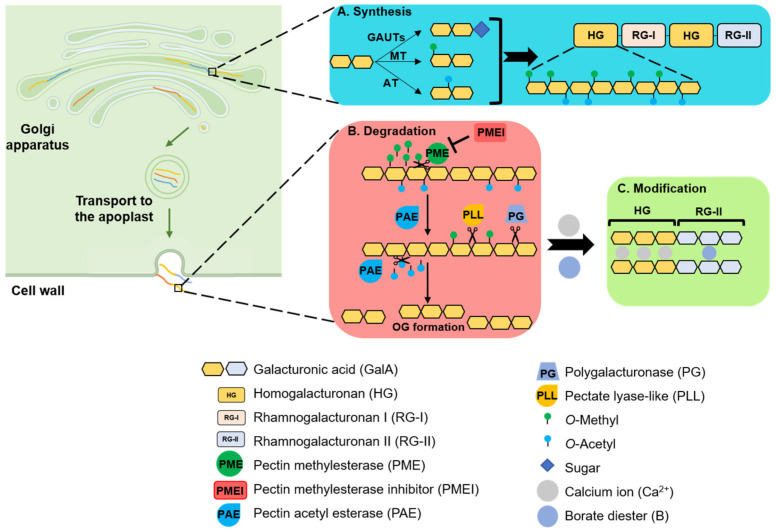Figure 1.
An overview of the synthesis, degradation, and modification of pectin in the plant cell wall. (A) Pectins—structurally complex polysaccharides including homogalacturonan (HG), rhamnogalacturonan I (RG-I), and rhamnogalacturonan II (RG-II)—are synthesized in the Golgi apparatus. HG is synthesized by the glucuronosyltransferase (GAUT) family of enzymes and modified by methyltransferase (MT) and acetyltransferase (AT). (B) The highly methylesterified pectin is delivered to the cell wall surface via vesicle-mediated transport and incorporated into the cell wall. HG is selectively demethylated via the wall-bound pectin methylesterases (PMEs) and deacetylated via pectin acetylesterases (PAEs). PME activity is controlled by the proteinaceous pectin methylesterase inhibitor (PMEI). Pectinolytic enzymes such as polygalacturonase (PG) and pectate lyase-like (PLL) are important for HG depolymerization, which results in the formation of oligogalacturonides (OGs). (C) Antiparallel polyuronate chains of HG form egg-box dimers with Ca2+, and HG backbones of the RG-II polysaccharides are covalently linked via borate diester crosslinks.

